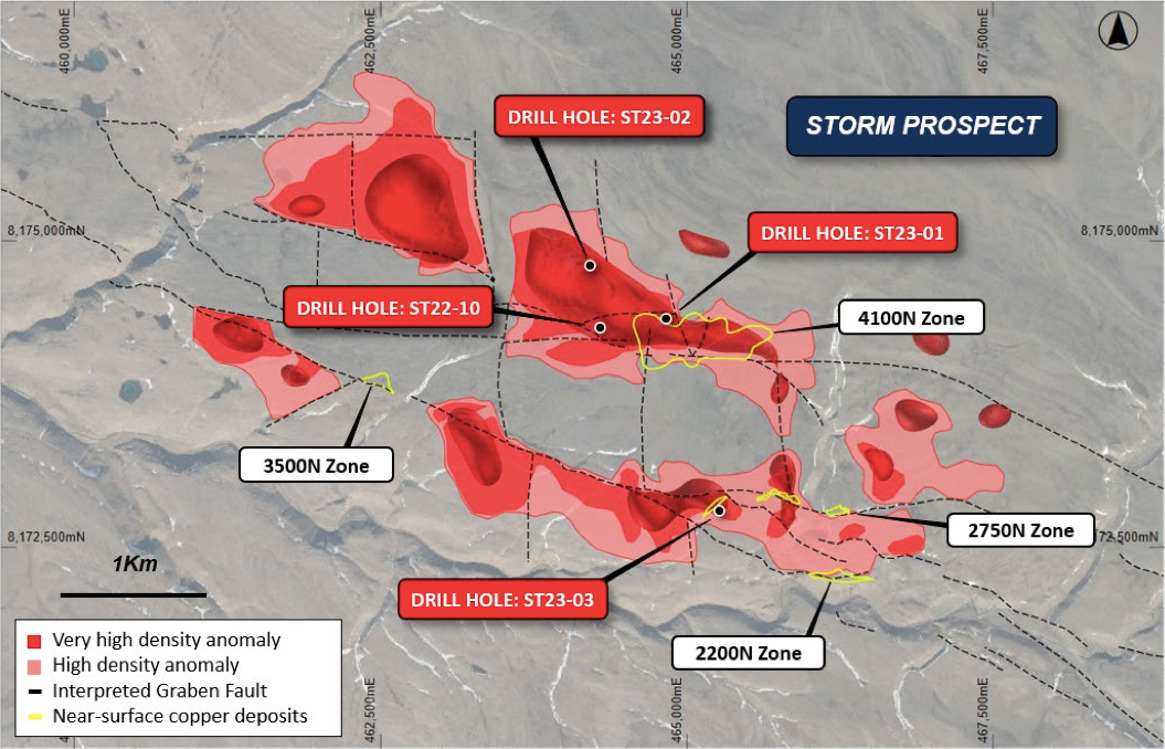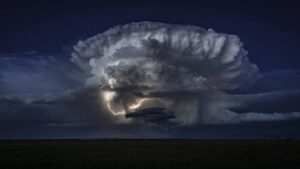American West Metals produces double drill hit, discovering two new strong copper zones at Storm Project

Diamond drilling at Storm Project continues to deliver; producing one of the best intersections ever seen at the Project. Pic: via Getty Images.
Diamond drilling at American West Metals’ Storm copper project in Canada has flagged two more “exceptional” discoveries, the company says.
American West Metals (ASX:AW1) reported diamond drill hole ST23-03 encountered a new near-surface zone of mineralisation and a deeper sediment-hosted copper system in an underexplored area of the Storm project.
Over 76m of near surface breccia copper sulphides with zones of massive sulphide have been intersected in ST23-03.
The drill hole has also – for the first time – intersected copper sulphides within the deeper horizon close to the southern graben fault, confirming the presence of the sediment-hosted system in new and untested areas.
Diamond drill hole ST23-03 is just the third drill hole in American West’s drilling campaign and was designed to test a high-priority, near-surface Moving Loop Electromagnetic (MLEM) conductor, as well as a gravity anomaly proximal to the Southern Graben Fault at depth.
American West’s success rate continues with ST23-03 discovering two zones of visual copper sulphide mineralisation:
- 76m of visual strong breccia to massive copper sulphide (chalcocite, bornite and chalcopyrite) between 32m and 108m downhole; and
- 2m of visual breccia and dense vein style copper sulphide (chalcocite, bornite and chalcopyrite) between 273m and 275m downhole.
Notably, the deeper intersection was interpreted to correlate with the prospective sediment hosted copper horizon intersected earlier this season.
American West Metals (ASX:AW1) says that while laboratory assays are required to determine the presence and grade of any contained mineralisation within the reported visual intersections, the drilling results confirm that these geophysical techniques are reliable targeting tools for copper sulphides at Storm.
Sediment hosted system in new and untested areas
The drill hole highlights the outstanding exploration and expansion potential of both the near-surface, open-pit accessible mineralisation, and the deeper, large-scale sedimentary copper system.
The drill hole has also – for the first time – intersected copper sulphides within the deeper horizon close to the southern graben fault, confirming the presence of the sediment-hosted system in new and untested areas.
“The new near surface copper zone has been named Thunder, which highlights the strength and significance of the discovery,” MD Dave O’Neill said.
The thickness and intensity of the mineralisation of Thunder and high- grade 2750N and 2200N zones along strike to the east, suggests that this high-grade mineralisation and structural setting may be directly related to their proximity to the Southern Graben Fault.
These faults are interpreted to be the primary source of plumbing for both the near-surface, and deeper copper mineralisation.
Potential to add to open pit resources
O’Neill says the thickness of the near-surface intersection – which includes massive copper sulphides – suggests the potential for a substantial volume of copper in this area that could significantly add to the open pit resources at Storm.
“The deeper copper intersection is very significant from the perspective of understanding the overall copper endowment at Storm,” he said.
“This confirms the prospectivity of the whole area around, and to the south of the southern graben fault.
“With every wide-spaced hole encountering the same mineralised unit at depth, the scale potential of the copper system cannot be overstated.”

Pic: Plan view of the Storm area showing the gravity data interpretation, known copper deposit footprints (yellow), major faults, and diamond drill hole locations.
Diamond drilling continues on high-priority targets
Reserve Circulation (RC) drilling is continuing in the Storm area with the results from the 2750N and 2200N zones expected shortly.
The drilling will also focus on expansion of the 4100N Zone and testing a number of new, near-surface copper targets.
“Given the success of the gravity modelling and targeting to date, we will roll out further ground surveys along the 10km of strike as a priority in spring,” O’Neill said.
“We look forward to providing further news flow and updates on both the diamond and RC drilling program in the coming days.”
In addition, ore sorting, beneficiation and process optimisation continues on a range of ore types and the company plans to begin an environmental baseline survey in mid-August.
This article was developed in collaboration with American West Metals, a Stockhead advertiser at the time of publishing.
This article does not constitute financial product advice. You should consider obtaining independent advice before making any financial decisions.
Related Topics

UNLOCK INSIGHTS
Discover the untold stories of emerging ASX stocks.
Daily news and expert analysis, it's free to subscribe.
By proceeding, you confirm you understand that we handle personal information in accordance with our Privacy Policy.








